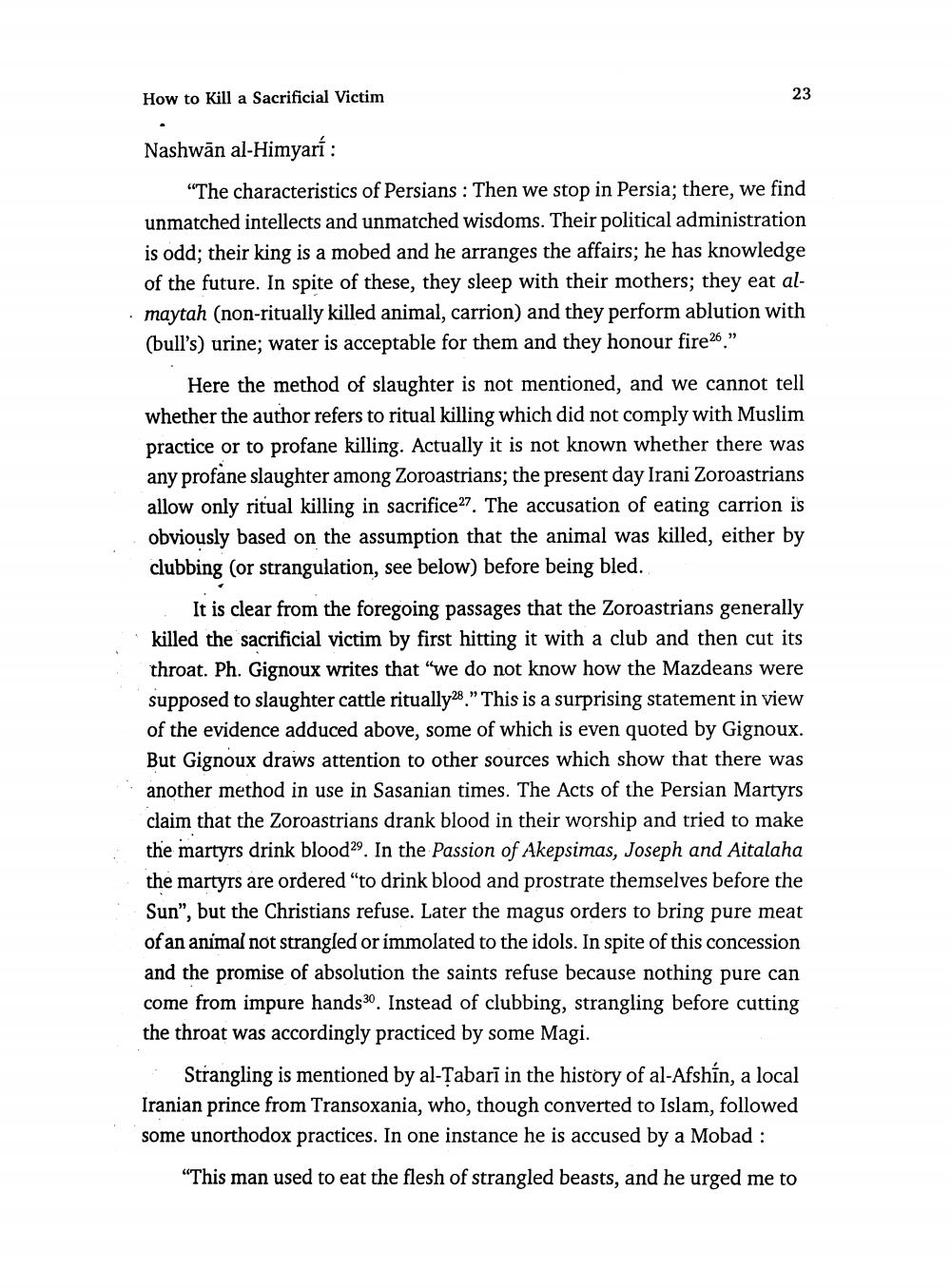________________
How to Kill a Sacrificial Victim
23
Nashwan al-Himyari:
"The characteristics of Persians: Then we stop in Persia; there, we find unmatched intellects and unmatched wisdoms. Their political administration is odd; their king is a mobed and he arranges the affairs; he has knowledge of the future. In spite of these, they sleep with their mothers; they eat almaytah (non-ritually killed animal, carrion) and they perform ablution with (bull's) urine; water is acceptable for them and they honour fire","
Here the method of slaughter is not mentioned, and we cannot tell whether the author refers to ritual killing which did not comply with Muslim practice or to profane killing. Actually it is not known whether there was. any profane slaughter among Zoroastrians; the present day Irani Zoroastrians allow only ritual killing in sacrifice". The accusation of eating carrion is obviously based on the assumption that the animal was killed, either by clubbing (or strangulation, see below) before being bled.
It is clear from the foregoing passages that the Zoroastrians generally killed the sacrificial victim by first hitting it with a club and then cut its throat. Ph. Gignoux writes that "we do not know how the Mazdeans were supposed to slaughter cattle ritually." This is a surprising statement in view of the evidence adduced above, some of which is even quoted by Gignoux. But Gignoux draws attention to other sources which show that there was another method in use in Sasanian times. The Acts of the Persian Martyrs claim that the Zoroastrians drank blood in their worship and tried to make the martyrs drink blood". In the Passion of Akepsimas, Joseph and Aitalaha the martyrs are ordered "to drink blood and prostrate themselves before the Sun", but the Christians refuse. Later the magus orders to bring pure meat of an animal not strangled or immolated to the idols. In spite of this concession and the promise of absolution the saints refuse because nothing pure can come from impure hands. Instead of clubbing, strangling before cutting the throat was accordingly practiced by some Magi.
Strangling is mentioned by al-Tabari in the history of al-Afshin, a local Iranian prince from Transoxania, who, though converted to Islam, followed some unorthodox practices. In one instance he is accused by a Mobad:
"This man used to eat the flesh of strangled beasts, and he urged me to




